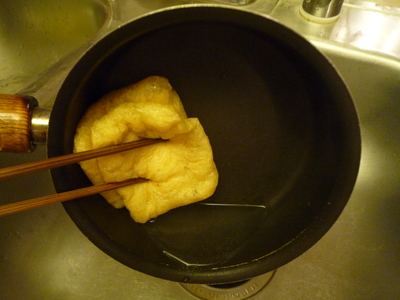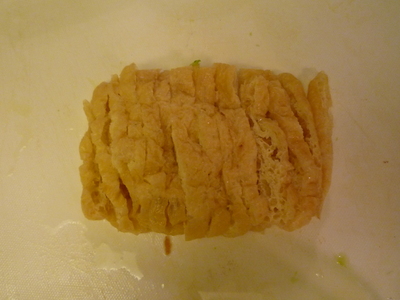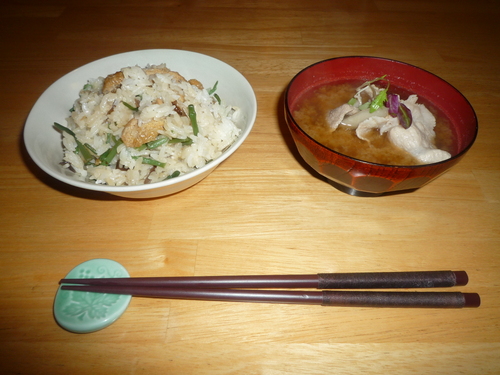When I think of this rice, I think of fighting with my brother on who got to do the dishes that night. My brother and I took turns washing dishes every other night and since Japanese food usually has many small dishes, both of us always wanted maze gohan (mixed rice) night to fall on the days we had to wash dishes. I think we usually ended up doing janken (rock, scissors, paper) but mostly I remember losing. Older brothers are sneaky and I swear he had the power to read my mind.
Even now, I think about how easy the clean up is for this dish. The other great thing is that there are plenty of left overs. I’ll usually make it into onigiri or have it for lunch or dinner the next day. There is also a lot less work prepping the ingredients than some of the other maze gohan dishes I’ve posted because the veggies come packed in water and all you have to do is drain and you’re ready to cook.
Ingredients
1 (7 oz.) bag of sansai mix
1 teaspoon of vegetable oil.
2 pieces of age, boiled and chopped
2 (1/4) cups of Japanese rice
2 tablespoons of sake
2 tablespoons of soy sauce
4 tablespoons of dashijiru (ichibandashi or nibandashi) or substitute with water and 1/8 teaspoon of dashi powder.
3 teaspoons of sugar
Directions
1) Wash and prepare the rice. (See electric rice cooker directions) The timing of the rice and the timing of the vegetables is important. The vegetables should be ready to go into the rice cooker about 5 minutes after the switch turns to keep warm.
2) Boil the age for a few minutes to drain some of the fat. This step will allow the age to soak up the sauce later. It’s not necessary to squeeze all the water out but try to get most of it out.
3) Cut the age into strips.
4) Drain the sansai mix add it to a hot pan with vegetable oil. Stir fry for 2 minutes.
5) Add the age and continue to stir fry.
6) Add the sauce ingredients: Dashijiru, soy sauce, sake, and sugar and simmer until the seri is done. It doesn’t have to be soft because it will steam in the rice cooker and continue to cook but it shouldn’t be tough. A general rule is that you want the veggies to be about the same consistency as the rice.
*You can substitute the dashijiru with water and about 1/8 teaspoon of dashi powder.
7) After the rice cooker turns to keep warm, allow the rice to steam in the rice cooker for an additional 5 minutes. Add the contents of the frying pan and give everything a quick stir and close the lid.
8)Allow everything to steam for an additional 10 minutes. (This will allow the rice to absorb the sauce).
9) Serve the rice in bowls and turn off the rice cooker so that the rice doesn’t burn on the bottom of pot.
Boil the age and drain the water.
Drain the sansai mix and add it to the frying pan with vegetable oil.
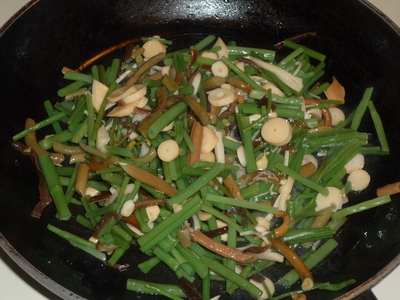
Add the age and stir fry for another minute.
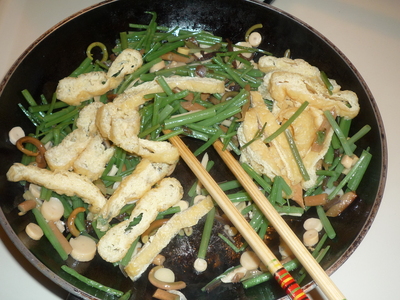
Add the sauce ingredients starting with the dashijiru or water and dashi powder. Simmer on low until the seri (bright green Japanese parley) is soft.
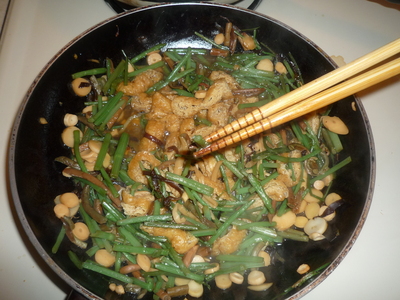
After the rice has steamed 5 minutes, add the contents of the frying pan to the rice and mix quickly and close the rice cooker. Allow to steam another 10 minutes.
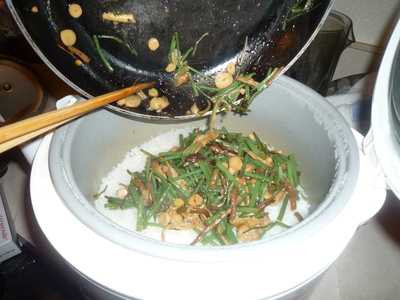
The rice is ready to be served.
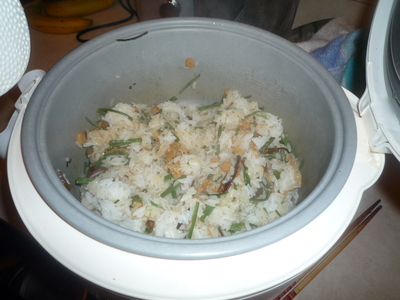
Use a big bowl since it’s the main course for this meal.
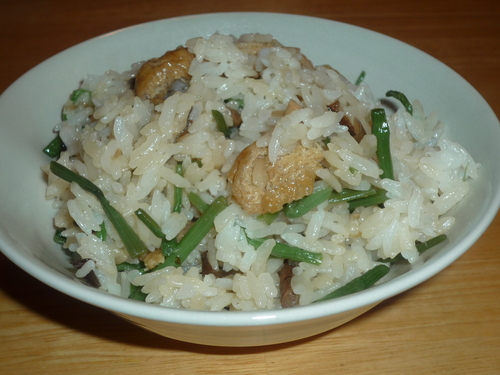
Pair with Tonjiru (Pork and Gobo) miso soup.

Naomi Kuwabara was born and raised in California but spent many summers in Japan growing up. She has spent time living in Hokkaido and Osaka, both meccas for Japanese cuisine. Her passion is cooking and sharing her experiences cooking Japanese food with others. Her blog Umamitopia is about her experiences cooking Japanese food. Her greatest inspirations are from her mother and grandmother. Her cooking adventures can be found at http://umamitopia.com.

